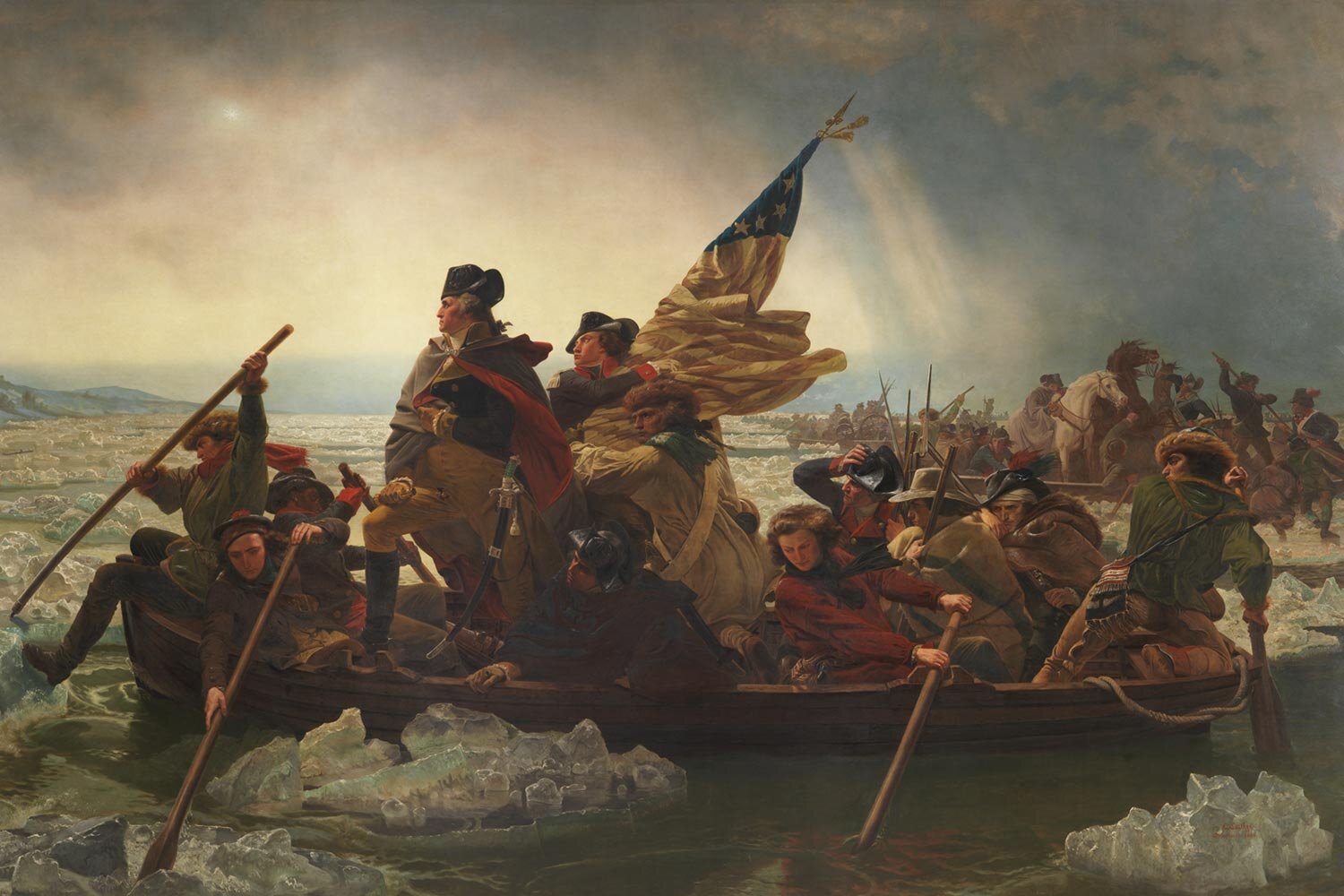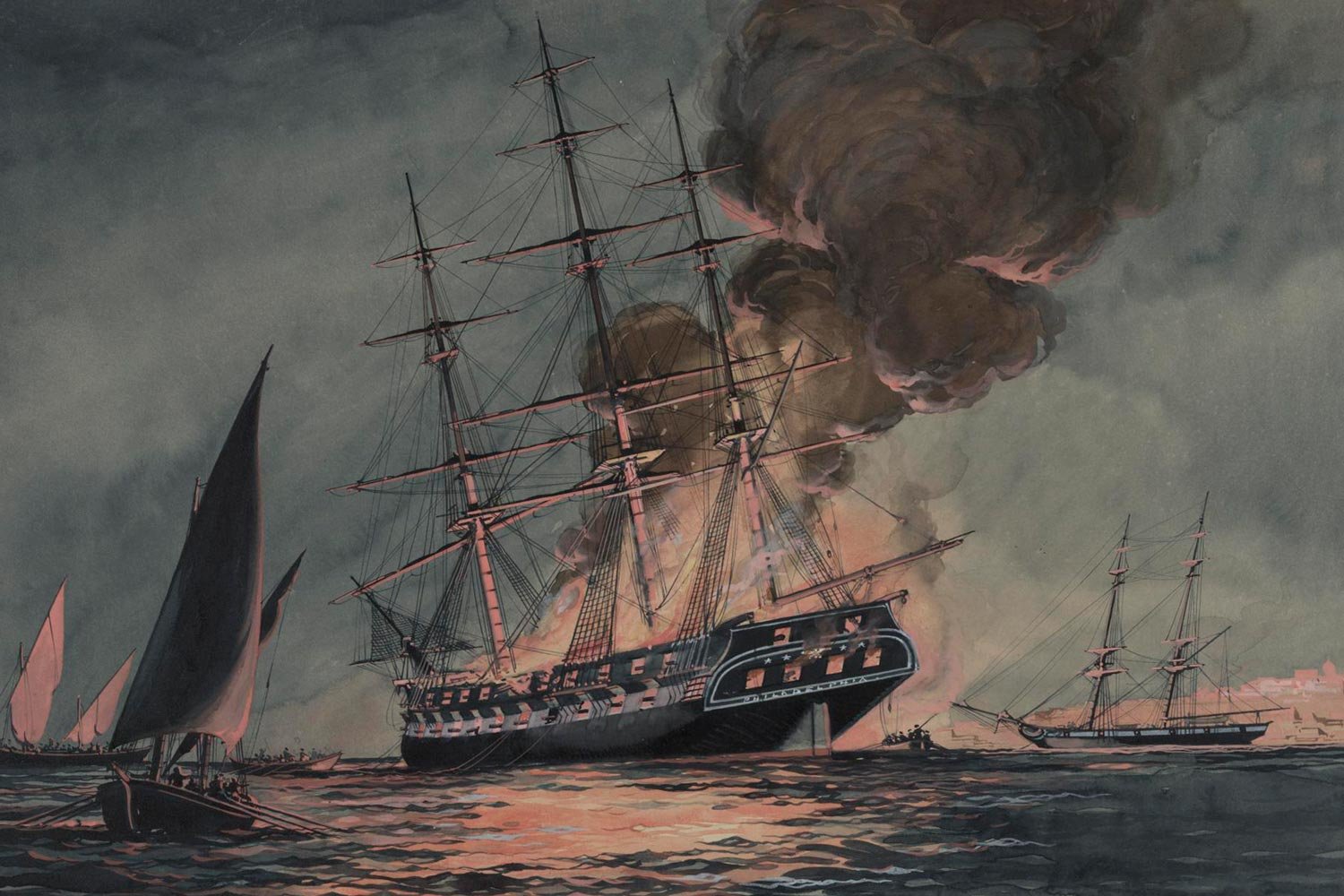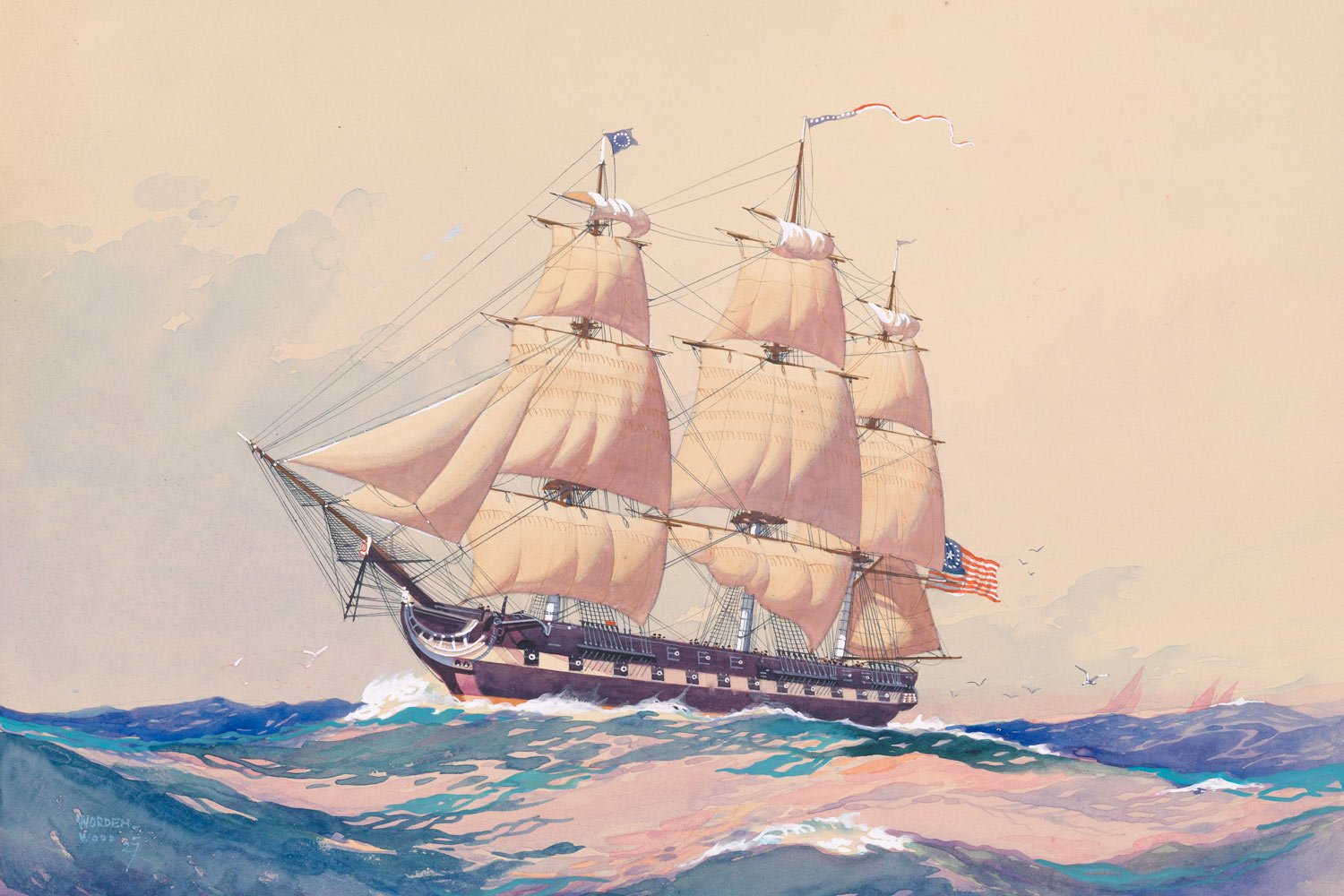Nathanael Greene Joins the Cause
Nathanael Greene was one of the greatest American generals to emerge from the American Revolution. Without any formal military training or any experience, Greene developed into a leader feared and respected by his British counterparts.
His soldier’s life began in October 1774, when Greene used his own funds to establish a militia unit called the Kentish Guards. As Greene stated to his friend Colonel James Varnum, “I thought the cause of liberty was in danger and… it was necessary to cultivate a military spirit amongst this people.”
Surprisingly, after working to create this unit, the men voted to deny Greene an officer’s rank due to a limp he had had since childhood. Greene took this insult with amazing good grace and continued to drill with the Guards.
With the commencement of the American Revolution on April 19, 1775, at the Battles of Lexington and Concord, Rhode Island officials disbanded the Kentish Guards and established an Army of Observation. After two men turned down a Brigadier General’s commission and the command of this outfit, it was offered to Greene, and he accepted, making Greene the youngest general in the army.
Greene and his men hastened to Boston where the Continental Army was laying siege to the city. Almost immediately, Greene’s leadership abilities were demonstrated, and his brigade was recognized as the most disciplined and best equipped of the colonial militias.
General George Washington, a keen judge of men, was impressed by Greene and soon entrusted Greene with a Continental Army brigade consisting of seven regiments. When the British evacuated Boston on March 17, 1776, Washington named Greene the city’s garrison commander. For his part, Greene viewed Washington as a father figure and his devotion and loyalty to the great man never ceased.
General Washington soon ordered Greene and his regiment to New York for the anticipated British campaign against the city. Although absent due to illness from the Battle of Long Island, Greene participated in all other major engagements during the fight for Manhattan. In August, Greene was promoted to Major General and, later that fall, he was assigned command of Fort Lee in New Jersey and Fort Washington at the north end of Manhattan.
Notably, Greene was criticized for failing to abandon Fort Washington when threatened by British forces, believing the fort could withstand an assault. Events proved him terribly wrong, which resulted in the capture of the entire 3,000-man garrison, a loss for the Continental Army only exceeded by the surrender of Charleston in 1780.
Washington was disappointed but stood by Greene, refusing to dismiss him despite many calls from Congress and others to do so. Washington may have remembered his own surrender at Fort Necessity in 1754 when he was just starting his military career and recognized the learning curve associated with commanding men in battle.
The Continental Army now fled across New Jersey, greatly assisted by supply depots along the route of march previously organized by Greene. This logistical feat was a foreshadowing of the genius he would show while serving as Quartermaster General of the Army. Importantly, Greene’s preparation helped the Americans stay ahead of their pursuers and, in mid-December, Washington’s force reached the relative safety of Pennsylvania.
Emanuel Leutze. “Washington Crossing the Delaware.” Metropolitan Museum of Art.
At this pivotal moment in our nation’s infancy, General Washington crossed the Delaware on Christmas night 1776 and attacked the Hessian garrison at Trenton. Exhibiting complete faith in General Greene, Washington entrusted the critical left wing of the assault to him, and Greene’s men performed well, surprising and capturing over 900 soldiers.
In 1777, British General William Howe moved to capture Philadelphia, our nation’s capital. At the Battle of Brandywine Creek on September 11, Greene commanded a division that protected Chadd’s Ford, the most likely British assault point. Instead, the Redcoats outflanked the Continentals, but Greene’s unit was able to wheel about and stave off disaster, allowing the Americans to conduct an orderly withdrawal. Following the fight, General Washington, not known for his flattery, wrote to Greene, “You, sir, are considered my favorite officer.”
With this loss, Washington was forced to abandon Philadelphia and the British occupied the city. On October 4, General Washington made one final attempt to strike a blow at the British before the onset of winter when he attacked their encampment at Germantown. The battle was inconclusive, and Washington moved his men into winter quarters at Valley Forge, about 18 miles from the capital.
Within weeks of establishing this base, food, clothing, and medicine was in short supply, and the men suffered accordingly. The issue was a lack of leadership from Quartermaster General Thomas Mifflin, a corrupt man who was not up to the task at hand. To save his withering army, Washington turned to Nathanael Greene, his most trusted subordinate, and asked him to fix the supply issues.
Greene was not desirous of the position, declaring “Nobody heard of a Quartermaster in history.” But, for the good of the cause, Greene accepted and soon revamped the entire supply system, turning the Quartermaster Department into an efficient operation. Unfortunately, the changes were not instituted in time to prevent the death of 2,500 men from disease, exposure, and hunger that terrible winter.
Next week, we will discuss how General Nathanael Greene saved the south in the American Revolution. Until then, may your motto be “Ducit Amor Patriae,” love of country leads me.












Commodore Edward Preble assembled his considerable American fleet just outside Tripoli harbor in August 1804, determined to punish the city and its corsairs, and force Yusuf Karamanli, the Dey of Tripoli, to sue for peace.